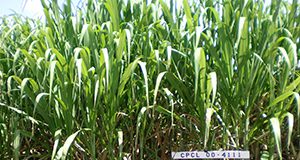CPCL 02-6848 and CPCL 05-1201 are emerging sugarcane cultivars in Florida. Both cultivars were released commercially in 2012 and were quickly adopted by local sugarcane growers because of high yields and moderate to high resistance against major sugarcane diseases in Florida. This 4-page fact sheet provides basic information and yield and disease information to assist growers in management of these cultivars. Written by Hardev Sandhu and Wayne Davidson, and published by the UF/IFAS Agronomy Department, March 2018.
http://edis.ifas.ufl.edu/sc104
Tag: Sugarcane Handbook
Sugarcane Cultivars Descriptive Fact Sheet: CPCL 97-2730 and CPCL 00-4111
CPCL 97-2730 and CPCL 00-4111 are emerging sugarcane cultivars in Florida with rapid expansion in last couple of years. Both were ranked among the top 10 sugarcane cultivars in Florida in the 2015 Sugarcane Variety Census (VanWeelden et al. 2016) based on their total acreage. High biomass yield and better rust resistance greatly improve the chances of the cultivars’ adoption by growers. This fact sheet provides basic information and yield and disease information about CPCL 97-2730 and CPCL 00-4111 to assist growers in decision-making related to further expansion of these cultivars. Written by Hardev Sandhu and Wayne Davidson, and published by the UF/IFAS Agronomy Department, May 2017.
http://edis.ifas.ufl.edu/sc103
Nitrogen Fertilizer Recommendations for Sugarcane Production for Sugar on Florida Sand Soils
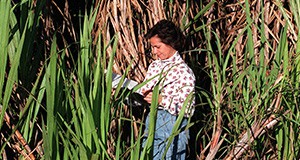
Sands used in sugarcane production in Florida have low levels of organic matter, silt, and clay, and they provide little N through mineralization of organic matter and possess a low capacity for N retention as a result. Because these soils are highly leachable, N must be managed well to ensure adequate nutrition for the crop as well as protection of groundwater. This new 4-page fact sheet is part of the Sugarcane Handbook, and it discusses sand soils used in sugarcane production, sugar yield response to nitrogen, and revised nitrogen recommendations. Written by J. Mabry McCray, Kelly T. Morgan, and Les Baucum, and published by the UF Agronomy Department, February 2016.
http://edis.ifas.ufl.edu/sc101
Sugarcane Ratoon Stunting
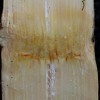 Ratoon stunting, also known as ratoon stunting disease (RSD), is considered by many sugarcane pathologists to be the most important disease affecting sugarcane production worldwide, because it can cause 5% to 15% crop yield losses without growers even realizing their fields are infected. This 3-page fact sheet describes the symptoms, causal agent, and prevention and control. Written by P. Rott, S. Sood, J. C. Comstock, R. A. Gilbert, and H. S. Sandhu, and published by the UF Department of Agronomy, August 2014. (Photo credit: Sushma Sood, USDA)
Ratoon stunting, also known as ratoon stunting disease (RSD), is considered by many sugarcane pathologists to be the most important disease affecting sugarcane production worldwide, because it can cause 5% to 15% crop yield losses without growers even realizing their fields are infected. This 3-page fact sheet describes the symptoms, causal agent, and prevention and control. Written by P. Rott, S. Sood, J. C. Comstock, R. A. Gilbert, and H. S. Sandhu, and published by the UF Department of Agronomy, August 2014. (Photo credit: Sushma Sood, USDA)
http://edis.ifas.ufl.edu/sc002
Managing Against the Development of Herbicide-Resistant Weeds: Sugarcane
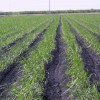 Profitable sugarcane production in Florida requires effective weed management. Herbicides provide an efficient and cost-effective means of weed control, but excessive use of a single herbicide or group of herbicides with the same mechanism of action has resulted in the development of herbicide-resistant weeds. In crops such as sugarcane where a limited number of herbicides are registered, the loss of a single effective herbicide can be very costly. Thus, it is critical to manage herbicides in order to prevent or delay the development of herbicide-resistant weed populations. This 4-page fact sheet lists herbicides by group number, mechanism of action, chemical family, common name, and trade name. Written by D.C. Odero, B.A. Sellers, J.A. Ferrell, and G.E. MacDonald, and published by the UF Department of Agronomy, October 2014.
Profitable sugarcane production in Florida requires effective weed management. Herbicides provide an efficient and cost-effective means of weed control, but excessive use of a single herbicide or group of herbicides with the same mechanism of action has resulted in the development of herbicide-resistant weeds. In crops such as sugarcane where a limited number of herbicides are registered, the loss of a single effective herbicide can be very costly. Thus, it is critical to manage herbicides in order to prevent or delay the development of herbicide-resistant weed populations. This 4-page fact sheet lists herbicides by group number, mechanism of action, chemical family, common name, and trade name. Written by D.C. Odero, B.A. Sellers, J.A. Ferrell, and G.E. MacDonald, and published by the UF Department of Agronomy, October 2014.
http://edis.ifas.ufl.edu/sc077
Sugarcane Orange Rust
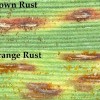 In June 2007, rust symptoms were observed on sugarcane cultivar CP80-1743 about six miles east of Belle Glade, Florida. The disease was confirmed as orange rust of sugarcane. It is hypothesized that rust spores were blown into the region as a disperse spore cloud from an unknown source rather than spread from a single or several small focal points. This 7-page fact sheet was written by P. Rott, S. Sood, J. C. Comstock, R. N. Raid, N. C. Glynn, R. A. Gilbert, and H. S. Sandhu, and published by the UF Department of Agronomy, May 2014.
In June 2007, rust symptoms were observed on sugarcane cultivar CP80-1743 about six miles east of Belle Glade, Florida. The disease was confirmed as orange rust of sugarcane. It is hypothesized that rust spores were blown into the region as a disperse spore cloud from an unknown source rather than spread from a single or several small focal points. This 7-page fact sheet was written by P. Rott, S. Sood, J. C. Comstock, R. N. Raid, N. C. Glynn, R. A. Gilbert, and H. S. Sandhu, and published by the UF Department of Agronomy, May 2014.
http://edis.ifas.ufl.edu/sc099
Life Cycle of the Lesser Cornstalk Borer in Sugarcane (ENY913/SC093)
 The lesser cornstalk borer attacks a large number of crops, but is a potentially serious pest of sugarcane. But since the populations of this pest vary greatly depending on temperature, UF/IFAS scientists are developing predictive models to predict lesser cornstalk borer population in field. This 4-page fact sheet was written by H.S. Sandhu, L.E. Baucum, and G.S. Nuessly and published by the UF Department of Entomology and Nematology, September 2011.
The lesser cornstalk borer attacks a large number of crops, but is a potentially serious pest of sugarcane. But since the populations of this pest vary greatly depending on temperature, UF/IFAS scientists are developing predictive models to predict lesser cornstalk borer population in field. This 4-page fact sheet was written by H.S. Sandhu, L.E. Baucum, and G.S. Nuessly and published by the UF Department of Entomology and Nematology, September 2011.
http://edis.ifas.ufl.edu/sc093
SSAGR335/AG345 Sugarcane Nutrient Management Using Leaf Analysis
SSAGR335, a 7-page illustrated fact sheet by J. Mabry McCray and Rao Mylavarapu, provides growers with sufficiency categories of leaf nutrient concentrations and with nutrient management suggestions for each category. Includes references. Published by the UF Department of Agronomy, July 2010.
http://edis.ifas.ufl.edu/ag345
SS-AGR-228/SC028 Nutritional Requirements for Florida Sugarcane
Revised! SS-AGR-228, an 8-page fact sheet by R. W. Rice, R. A. Gilbert and J. M. MCray, provides an overview of plant nutrition, with general guidelines and deficiency symptoms for each nutrient for sugarcane production in Florida. Includes references. Published by the UF Department of Agronomy, December 2009.
http://edis.ifas.ufl.edu/sc028
SC088 Costs and Returns for Sugarcane Production on Muck Soils in Southern Florida 2008 – 2009
SC088, a 14-page report by Fritz M. Roka, Leslie E. Baucum, and José Alvarez, estimates an enterprise budget that reflects annual costs and returns for a 5,000-acre farm that grows sugarcane on organic soil, commonly referred to as “muck.” Includes references. Published by the UF Department of Food and Resource Economics, March 2010.
http://edis.ifas.ufl.edu/sc088
SSAGR128/SC075 Sugarcane Plant Nutrient Diagnosis
Revised! SS-AGR-128, a 26-page illustrated fact sheet by J. Mabry McCray, Ronald W. Rice, Ike V. Ezenwa, Timothy A. Lang, and Les Baucum, assists sugarcane growers make improved decisions regarding fertilization through the use of leaf nutrient analysis along with visual evaluation of malnutrition symptoms to complement a soil testing program. Includes references. Published by the UF Department of Agronomy, December 2009.
http://edis.ifas.ufl.edu/SC075
SSAGR253/SC052 Backyard Sugarcane
Revised! SS-AGR-253, a 5-page fact sheet by L. Baucum, R.W. Rice, and L. Muralles, informs homeowners of the types and varieties of sugarcane, site selection, planting material, planting, early care, formation of the stool, pest management, harvesting, and overwintering. Published by the UF Department of Agronomy, October 2009.
http://edis.ifas.ufl.edu/SC052
